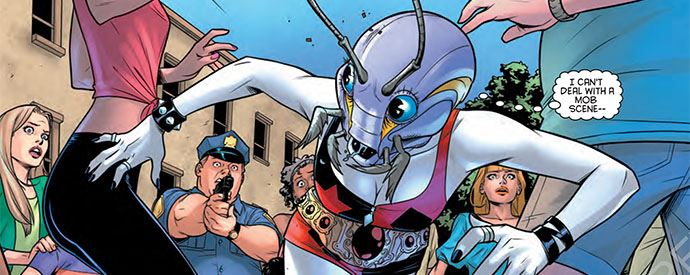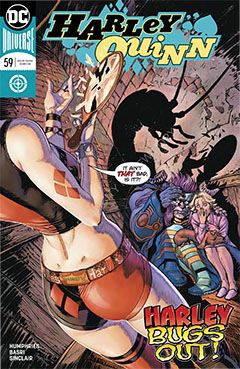- Comics
- Comics Reviews
- Manga
- Comics Reviews
- European Comics
- News
- Comics News
- Press Releases
- Columns
- Spotlight
- Digital Comics
- Webcomics
- Cult Favorite
- Back Issues
- Webcomics
- Movies
- Toys
- Store
- More
- About

By Philip Schweier
March 6, 2019 - 09:30
So
Sam Humphries borrows a page out of Kafka, having Harley transform into
something hideous. Wherein Kafka’s story it was completely random and
unexplained, here, Harley is the victim of a trio of witches. But apparently,
the manipulators are also being manipulated, as the story reveals in the end.

While Harley’s outward appearance changed, her clothing did not, making me wonder how that slipped past her friends and loved ones. They seemingly only saw “the monster,” rather than the red and black color scheme of its wardrobe. But then I remind myself that whatever transpires in the pages of Harley Quinn are the interpretations of Harley herself. For all I know, all this anti-hero stuff is a dream sequence and she’s actually still in her cell at Arkham.
But I did enjoy Sami Basri’s artwork, which reminded me of the work of Kurt Schaffenberger. For those fans born after the Crisis, Schaffenberger was a long-time DC artist who worked on the Superman franchise throughout the 1960s and ‘70s. Most of his work was in such titles as Lois Lane and Jimmy Olsen. But it had an innocent cartoony style to it that was refreshingly simple. Basri’s work isn’t quite so cartoony, but it has a simplicity of line I genuinely appreciate. The constant cross-hatching and overly textured work of illustrators like Jim Lee and Rob Liefeld can be tiresome.
The trials of Harley Quinn will continue next issue. It appears the story arc still has three chapters left to it, though my numbers may be off. But the next trial actually starts here, so don’t wait until next issue.
Rating: 6/10